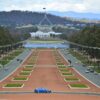
Japan’s ALPS Water Release Meets Safety Standards
The International Atomic Energy Agency (IAEA) said today that Japan continues to comply with international safety standards in its discharge of ALPS treated water from the Fukushima Daiichi Nuclear Power Station (FDNPS), following the latest review mission by the Task Force set up to assess the safety of the process.
From 26 to 30 May, the Task Force met with government and municipal officials, as well as representatives from Tokyo Electric Power Company (TEPCO) – operator of the plant – in Tokyo. The Task Force observed the ALPS treated water discharge facilities at the FDNPS, in its fourth mission to Japan since the start of the ALPS treated water discharge on 24 August 2023. The IAEA Task Force also discussed the implementation of the ALPS Additional Measures.
The IAEA Comprehensive Report on the Safety Review of the ALPS-Treated Water at the Fukushima Daiichi Nuclear Power Station, released in July 2023, found Japan’s approach to discharging the ALPS treated water to be consistent with international safety standards and that the discharge as planned would have a negligible radiological impact on people and the environment.
The Task Force focused the scope of this week’s mission on evaluating Japan’s monitoring programmes and related activities of the discharge, as well as the outcomes of these efforts, against the relevant requirements set out in the international safety standards. This evaluation covered the period from the commencement of the discharge of ALPS treated water to the present, reviewing radionuclide monitoring in the ALPS treated water stored in tanks, in the diluted water both prior to and during discharge, and in the marine environment. In addition, the Task Force assessed the corroborative monitoring conducted by the IAEA.
During its visit to the discharge facility of the ALPS treated water at FDNPS on 28 May, the Task Force received a briefing from TEPCO on the latest situation at the site and reviewed the status of the ALPS treated water discharge facilities, focusing on monitoring equipment.
“As a result of our assessment this week, the Task Force can again confirm that Japan’s ongoing monitoring of the ALPS treated water discharge complies with international safety standards,” said Gustavo Caruso, Chair of the Task Force. He emphasized the importance of the IAEA’s independent verification of Japan’s monitoring programmes. “The IAEA’s ongoing corroboration monitoring activities and onsite independent sampling and analyses provide a comprehensive, transparent and independent verification of the accuracy and reliability of the data reported by TEPCO and the Government of Japan,” he said.
This marks the ninth mission for the Task Force since the beginning of the IAEA’s multiyear review in 2021. The Task Force comprises IAEA staff and 11 international experts from Argentina, Australia, Canada, China, France, the Marshall Islands, the Republic of Korea, the Russian Federation, the United Kingdom, the United States and Viet Nam.
During the review mission, the Task Force held discussions with TEPCO at the plant site, as well as with the Nuclear Regulation Authority, Japan’s Ministry of Foreign Affairs, the Ministry of Economy, Trade and Industry, the Ministry of Environment, Fisheries Agency of Japan, and the Fukushima Prefecture.
IAEA monitoring
IAEA interlaboratory comparisons have been carried out since before the discharges started to verify the competency of the Japanese laboratories, including TEPCO, responsible for monitoring and to ensure that the results they obtain are accurate and comparable to those of the IAEA and third-party laboratories.
Onsite sampling and analysis have also been conducted by the IAEA experts at the FDNPS since July 2023, when Director General Rafael Mariano Grossi established an IAEA office at the site. The IAEA’s onsite laboratory has analysed the first 12 water discharges, confirming that the tritium concentration in each batch of diluted ALPS treated water remains far below Japan’s operational limit, consistent with international safety standards. Radiation monitors and flow rate detectors at the site also feed live data to the IAEA’s dedicated real-time monitoring page.
The IAEA also conducts additional measures, which focus on expanding international participation and transparency, allowing hands-on independent measurements of the concentration level of the ALPS treated water. The latest mission carried out under the additional measures took place in April.
https://www.iaea.org/newscenter/pressreleases/japans-alps-treated-water-release-continues-to-comply-with-international-safety-standards-iaea-task-force-mission-confirms

